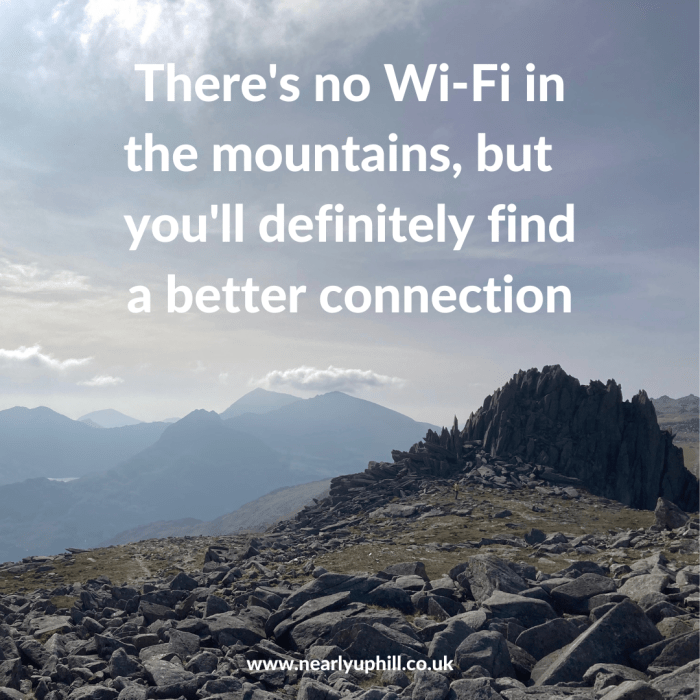Evaluasi Penggunaan Teknologi Video Konferensi Dalam Pendidikan Jarak Jauh

“Evaluasi Penggunaan Teknologi Video Konferensi dalam Pendidikan Jarak Jauh”—yo, what’s up, peeps? Online learning’s totally a thing now, right? But is video conferencing actually -lit* or just a major buzzkill? We’re diving deep into the good, the bad, and the totally awkward moments of using video calls for school.
From tech glitches to the impact on learning and mental health, we’re spilling the tea on everything.
Ini bukan cuma soal Zoom meetings yang lagging. Kita akan bahas segalanya: keuntungan dan tantangan video konferensi dalam pendidikan jarak jauh, bagaimana pengaruhnya terhadap interaksi guru-siswa dan hasil belajar, plus tips dan trik untuk memaksimalkan pengalaman online learning. Kita juga akan melihat sisi teknisnya, mulai dari spesifikasi minimal hingga troubleshooting masalah koneksi internet.
Siap-siap untuk upgrade game pembelajaran online kamu!
Dampak Penggunaan Video Konferensi dalam Pendidikan Jarak Jauh
Yo, what’s up, educators! Remote learning’s been a total game-changer, right? Video conferencing has become the MVP, connecting teachers and students in a whole new way. But, like, it’s not all sunshine and rainbows. Let’s dive into the real deal – the impact of video conferencing on distance education, both the good and the bad.
Keuntungan Penggunaan Video Konferensi dalam Pembelajaran Jarak Jauh
Okay, so let’s talk about the perks. Video conferencing totally levels up online learning. It’s way more engaging than just reading emails or text messages, you know? Think face-to-face interaction, but from afar.
- Enhanced Interaction:It’s easier to connect with teachers and classmates, making learning feel less isolating.
- Real-time Feedback:Teachers can provide immediate feedback on assignments and projects, keeping students on track.
- Flexibility and Accessibility:Students can learn from anywhere with an internet connection, making education more accessible to those in remote areas or with mobility issues.
- Visual Learning:Seeing the teacher and classmates adds a visual dimension to learning, which can improve comprehension for some students.
- Collaborative Learning:Group projects and discussions become easier to manage, fostering teamwork and collaboration.
Tantangan yang Dihadapi dalam Penerapan Video Konferensi untuk Pendidikan Jarak Jauh
But hold up, it’s not all smooth sailing. There are some serious hurdles to jump over when using video conferencing in education. Think of it like this: it’s a powerful tool, but you gotta know how to wield it.
- Technical Issues:Internet connectivity problems, software glitches, and equipment malfunctions can disrupt classes and frustrate both teachers and students. Imagine the epic fail of a frozen screen during a crucial presentation!
- Digital Divide:Not all students have equal access to technology and reliable internet, creating an inequitable learning environment. Some students might be totally left out of the loop.
- Engagement Challenges:Keeping students engaged during online sessions can be tough. It’s way easier to get distracted when you’re at home, right?
- Privacy Concerns:Data security and student privacy are major concerns. We need to make sure student information is safe and protected.
- Teacher Training:Teachers need proper training and support to effectively use video conferencing tools and adapt their teaching methods to online learning. It’s not just about clicking buttons; it’s about pedagogy.
Dampak Positif Video Konferensi terhadap Interaksi Guru-Siswa, “Evaluasi Penggunaan Teknologi Video Konferensi dalam Pendidikan Jarak Jauh”
Despite the challenges, video conferencing can seriously boost the teacher-student connection. It’s about building those relationships, even from a distance.
- Improved Communication:Face-to-face interaction allows for clearer communication and reduces misunderstandings.
- Stronger Rapport:Seeing each other’s faces helps build a stronger connection and rapport between teachers and students.
- Personalized Learning:Teachers can provide more individualized attention and support to students through video conferencing.
- Increased Student Participation:The interactive nature of video conferencing can encourage shy students to participate more actively in class.
Perbandingan Efektivitas Pembelajaran Tatap Muka dengan Pembelajaran Jarak Jauh Menggunakan Video Konferensi
Let’s be real, in-person learning and online learning are two totally different beasts. Both have their own strengths and weaknesses. It’s not about which one is “better,” but which one works best for specific situations and students.
In-person learning offers immediate interaction and a shared physical space, fostering a sense of community. However, online learning via video conferencing provides flexibility and accessibility, catering to diverse learning styles and geographical limitations. The effectiveness depends heavily on factors like teacher training, student engagement, and technological infrastructure.
A blended approach, combining both methods, might be the ultimate power move.
Perbandingan Berbagai Platform Video Konferensi
Choosing the right platform is key. There are a ton of options out there, each with its own features, pricing, and user-friendliness. Think of it like choosing the perfect pair of sneakers – you gotta find the one that fits your style.
| Platform | Fitur | Harga | Kemudahan Penggunaan |
|---|---|---|---|
| Zoom | Meeting, webinar, breakout rooms, screen sharing, recording | Free and paid plans | Easy to use, intuitive interface |
| Google Meet | Meeting, screen sharing, live captions, integration with Google Workspace | Free for basic use, paid plans for advanced features | Simple and user-friendly, integrated with other Google services |
| Microsoft Teams | Meeting, chat, file sharing, collaboration tools, integration with Microsoft 365 | Free and paid plans | User-friendly, integrates well with other Microsoft products |
| Skype | Meeting, video calls, screen sharing, instant messaging | Free for basic use, paid plans for additional features | Relatively easy to use, widely known and accessible |
Aspek Teknis dan Infrastruktur Video Konferensi

Yo, peeps! Video conferencing is like, totally crucial for online learning these days. But, let’s be real, tech glitches can totally crash the party. This section breaks down the tech specs and infra you need for a smooth, totally rad online class experience.
We’ll cover the essentials, troubleshoot common problems, and give you tips for killer audio and video quality. Get ready to level up your virtual classroom game!
Spesifikasi Teknis Minimal untuk Video Konferensi Efektif
To make sure your online classes don’t turn into a total disaster, you need the right tech setup. Think of it like this: you wouldn’t try to play a high-def game on a potato, right? Same goes for video conferencing.
Here’s the lowdown on what you need:
- Device:A laptop or desktop computer with a decent processor and enough RAM. Think at least a Core i5 or AMD Ryzen 5 processor and 8GB of RAM. A tablet might work in a pinch, but a computer is way better.
- Operating System:Windows 10 or 11, macOS, or Chrome OS. Make sure it’s up-to-date!
- Camera:A webcam with at least 720p resolution. A built-in webcam is fine, but an external one often gives you better quality.
- Microphone:A decent microphone is essential for clear audio. A headset with a built-in mic is a solid choice, avoiding background noise.
- Internet Connection:A stable internet connection with at least 5 Mbps upload and download speed is a must-have for smooth video and audio. More is always better, especially if you’re sharing your screen or using a lot of bandwidth.
- Software:A reliable video conferencing platform like Zoom, Google Meet, or Microsoft Teams. Familiarize yourself with its features before class starts.
Masalah Konektivitas Internet dan Solusinya
Lagging video, choppy audio – these are the enemies of a good online class. Internet connection issues are the usual suspects. Here’s how to handle them:
- Check your internet speed:Use a speed test website (like Ookla’s Speedtest.net) to see if your internet is up to snuff. If it’s slow, contact your internet provider.
- Close unnecessary apps and tabs:Streaming Netflix while trying to attend class? Yeah, that’s not gonna work. Close anything you don’t need to free up bandwidth.
- Restart your router and modem:Sometimes a simple reboot can fix a lot of connectivity problems. Unplug them, wait 30 seconds, and plug them back in.
- Consider a wired connection:If possible, use an ethernet cable instead of Wi-Fi. Wired connections are usually more stable and faster.
- Use a hotspot as a backup:If your home internet goes down, you can use your phone’s hotspot as a backup (but be mindful of your data limit).
Panduan Singkat Mengatasi Masalah Teknis Umum
Even with the best setup, things can still go wrong. Here’s a quick guide to handle some common issues:
| Problem | Solution |
|---|---|
| No audio | Check your microphone settings, make sure it’s selected correctly, and test it. |
| No video | Check your camera settings, make sure it’s enabled and selected correctly. |
| Lagging video/audio | Close unnecessary apps, restart your router, check your internet speed. |
| Screen sharing issues | Make sure you have the correct permissions to share your screen. |
| Echoing audio | Mute your microphone when not speaking, check your audio settings. |
Tips untuk Kualitas Audio dan Video yang Optimal
Want to impress your teacher (and your classmates)? Here are some tips to boost your audio and video quality:
- Find a well-lit area:Good lighting makes a huge difference in video quality. Avoid backlighting.
- Minimize background noise:Find a quiet space to minimize distractions.
- Use a headset:Headsets generally provide better audio quality than built-in microphones.
- Check your internet connection:A strong, stable internet connection is key to avoid lag.
- Test your setup before class:Join a test meeting to ensure everything is working correctly.
Pengaturan Ruang Kelas Virtual yang Efektif
Setting up your virtual classroom is key to a successful online learning experience. It’s all about creating a space that’s both functional and engaging.
- Organized Layout:Use breakout rooms for group discussions, share documents and presentations clearly, and have a designated space for Q&A.
- Interactive Tools:Utilize whiteboards, polls, and chat features to keep students engaged and foster collaboration.
- Clear Instructions:Provide clear instructions on how to use the platform and participate in activities. Don’t assume everyone’s tech-savvy.
- Regular Check-ins:Check in with students regularly to address any technical or learning difficulties.
- Visual Aids:Use visual aids like presentations, videos, and images to enhance understanding and maintain interest.
Pengaruh Video Konferensi terhadap Pembelajaran
Yo, what’s up, educators and students! Let’s dive into how video conferencing is totally changing the game in remote learning. It’s not just about seeing each other’s faces; it’s about how this tech impacts teaching styles, student engagement, and ultimately, those all-important grades.
We’re talking about the real deal here, the nitty-gritty of how video conferencing affects the learning process – from teacher moves to student vibes and final scores.
Perubahan Metode Pengajaran Guru
Video conferencing has seriously revamped how teachers teach. Think about it: no more one-size-fits-all lectures! Teachers can now use interactive tools, breakout rooms for group projects (totally rad!), and even incorporate polls and quizzes directly into the video call.
It’s like having a super-powered classroom, all from the comfort of your home. This allows for more personalized instruction and a chance for teachers to adapt their teaching style on the fly, based on student reactions and engagement levels.
It’s a total game-changer from the old-school lecture style.
Pengaruh Video Konferensi terhadap Keterlibatan Siswa
Let’s be real, keeping students engaged remotely is a major challenge. But video conferencing offers some awesome solutions. The face-to-face interaction, even virtually, creates a sense of community and connection that’s often missing in other online learning formats. Think interactive discussions, group work, and the ability for teachers to give immediate feedback – all boosting student involvement.
It’s like having a front-row seat, even when you’re miles away.
- Increased opportunities for student-teacher interaction.
- Enhanced collaboration through breakout rooms and shared documents.
- More opportunities for non-verbal communication and feedback.
Dampak Video Konferensi terhadap Hasil Belajar Siswa
The impact on student learning outcomes is a big question, right? While there isn’t a single, universally accepted answer, studies suggest that well-implemented video conferencing can positively influence academic performance. However, it’s crucial to remember that the effectiveness heavily depends on factors like teacher training, platform usability, and student access to technology.
It’s not a magic bullet, but it definitely has the potential to level up learning outcomes when used effectively.
“Effective use of video conferencing in education requires careful planning, engaging content, and interactive activities to maintain student engagement and maximize learning outcomes.”Dr. Anya Sharma, Educational Technologist (Fictional Expert)
Strategi untuk Meningkatkan Efektivitas Pembelajaran Menggunakan Video Konferensi
To make video conferencing truly awesome, we need a solid strategy. It’s not just about hopping on a call; it’s about making it a dynamic and engaging experience.
- Interactive Activities:Think polls, quizzes, breakout rooms, and collaborative projects. Keep it fresh and fun!
- Clear Structure and Objectives:Students need to know what’s up. A clear lesson plan is key.
- Regular Check-ins:Keep those lines of communication open. Ask for feedback and address any concerns.
- Tech Support:Make sure everyone has the tools and knowledge to participate effectively.
- Breaks and Engagement Strategies:Keep it moving! Avoid long stretches of passive learning.
Aspek Psikologis dan Sosial: “Evaluasi Penggunaan Teknologi Video Konferensi Dalam Pendidikan Jarak Jauh”
Yo, peeps! Video conferencing in online learning—it’s a total game-changer, right? But like, it’s not all sunshine and rainbows. We gotta dig deep into the psychological and social vibes it throws our way. This section breaks down how video conferencing impacts student interactions, potential mental health downsides, and strategies to make online learning way more chill and inclusive.
Pengaruh Video Konferensi terhadap Interaksi Sosial Antar Siswa
Think about it: online classes can feel super isolating. But video conferencing, when done right, can totally boost social interaction. It’s like, you get to see your classmates’ faces, hear their voices, and even see their reactions in real-time.
This can foster a sense of community and belonging, making online learning less lonely. However, it also depends on how the teacher facilitates interaction. A poorly managed session can lead to awkward silences and limited participation from some students.
It’s all about finding that sweet spot between structured interaction and organic conversations.
Potensi Dampak Negatif Video Konferensi terhadap Kesehatan Mental Siswa
Okay, let’s be real. Staring at a screen all day can be seriously draining. Digital fatigue is a legit thing, and it can manifest as eye strain, headaches, and even anxiety. Constantly being “on camera” can also create pressure to appear perfect, leading to stress and self-consciousness.
Some students might feel overwhelmed by the constant visual and auditory input. Plus, the lack of spontaneous, informal interactions that usually happen in a physical classroom can impact social skills development and lead to feelings of isolation. It’s crucial to be mindful of these potential pitfalls.
Strategi untuk Menciptakan Lingkungan Pembelajaran yang Inklusif dan Nyaman Melalui Video Konferensi
- Breakout Rooms:These are lifesavers! They let students chat in smaller groups, fostering more intimate interactions and giving shy students a chance to shine.
- Icebreakers and Fun Activities:Starting class with a quick game or icebreaker can ease tension and create a more relaxed atmosphere. Think online Pictionary or a quick “two truths and a lie” round.
- Flexible Participation Options:Not everyone thrives in the spotlight. Offer options for participation, like written responses or private chats, to cater to different learning styles and comfort levels.
- Regular Check-ins:Teachers should regularly check in with students, both individually and as a class, to gauge their emotional well-being and address any concerns.
Ekspresi Wajah Siswa Melalui Video Konferensi dan Dampaknya pada Komunikasi
Imagine this: Sarah’s got a question, but her camera angle is bad, and half her face is obscured by her messy hair. Her subtle frown goes unnoticed. The teacher might misinterpret her silence as disinterest, instead of a need for clarification.
On the other hand, if Maria is actively engaged, her bright eyes and nodding head clearly signal understanding. Video quality and camera angles play a HUGE role in how effectively students can communicate nonverbally. Clear, well-lit cameras and a mindful approach to camera placement are essential for effective communication.
Pedoman bagi Guru untuk Menangani Masalah Perilaku Siswa Selama Sesi Video Konferensi
Dealing with disruptive behavior online requires a different approach than in a traditional classroom. It’s important to be firm but fair, and to understand that some students might be acting out due to underlying issues.
| Perilaku | Strategi Penanganan |
|---|---|
| Siswa mengganggu dengan suara latar | Minta siswa untuk mematikan mikrofon kecuali saat berbicara. Berikan pengingat yang ramah namun tegas. |
| Siswa tidak fokus atau mengabaikan instruksi | Hubungi siswa secara pribadi melalui pesan atau email. Tanyakan apakah ada masalah yang menghambat pembelajarannya. |
| Siswa menggunakan chat untuk hal yang tidak relevan | Tetapkan aturan penggunaan chat yang jelas di awal kelas. Berikan konsekuensi yang konsisten jika aturan dilanggar. |
| Siswa menunjukkan perilaku tidak pantas di depan kamera | Tegur siswa secara pribadi. Jika perilaku berlanjut, laporkan ke pihak yang berwenang. |
Ringkasan Terakhir
So, there you have it, fam! Video conferencing in online learning is a total mixed bag. It’s got major upsides—like connecting with teachers and classmates—but also some serious downsides, like tech issues and potential for digital burnout. The key is finding a balance, optimizing the tech, and creating a positive learning environment.
Let’s make online school less of a struggle and more of a slay!
FAQ Umum
Apakah video konferensi cocok untuk semua mata pelajaran?
Tidak semuanya. Beberapa mata pelajaran, seperti praktikum sains, mungkin lebih sulit diterapkan melalui video konferensi.
Bagaimana mengatasi siswa yang malas berpartisipasi dalam video konferensi?
Buat sesi interaktif, gunakan breakout rooms, dan berikan tugas yang melibatkan partisipasi aktif.
Bagaimana cara menjaga privasi siswa selama video konferensi?
Gunakan platform terpercaya, atur pengaturan privasi dengan ketat, dan edukasi siswa tentang etika online.
Apa alternatif jika siswa tidak memiliki akses internet yang memadai?
Sediakan materi pembelajaran offline, jadwalkan sesi tatap muka terbatas, atau berkolaborasi dengan komunitas lokal untuk akses internet.




